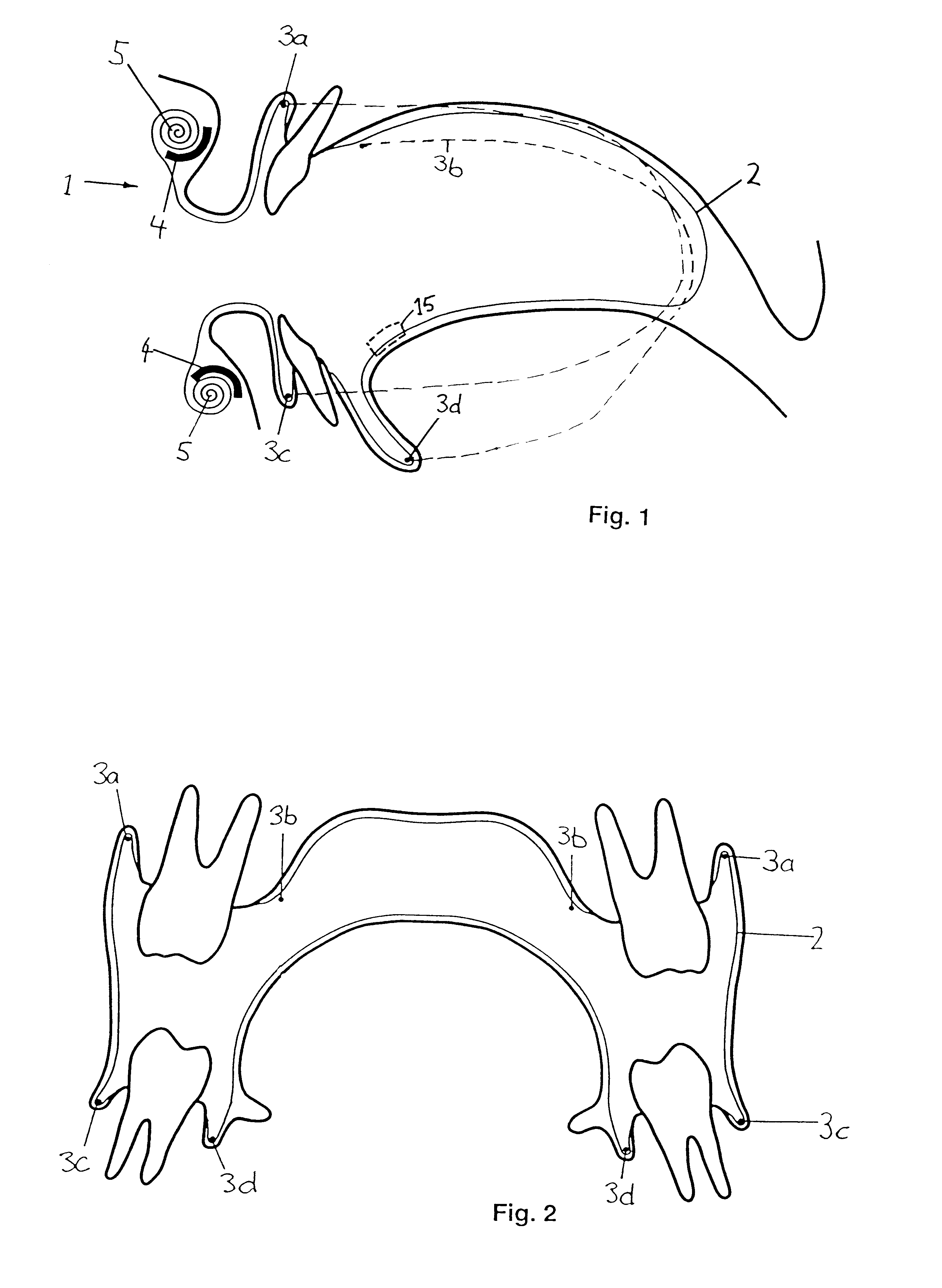Rubber dam
a rubber-dam and a technology of rubber-dams, applied in the field of rubber-dams, can solve the problems of inability to carry out any treatment of gingival margins with the known rubber-dam, the use of dentists is not common, and the treatment of gingival margins is not possibl
- Summary
- Abstract
- Description
- Claims
- Application Information
AI Technical Summary
Benefits of technology
Problems solved by technology
Method used
Image
Examples
third embodiment
FIG. 8 shows a rubber-dam 1 according to the invention consisting of a cover means 2 and the affixing device 3. In this case, the cover means 2 is a planar foil made of raw latex or another suited material, which is shown in the figure in its planar state.
The affixing device 3 comprises a frame of two plastically deformable retaining members 103a and 103b and two elastic connecting members 103c and 103d, which are applied flat to cover means 2 and serve as a holder means. The frame formed by members 103a to d encloses a partial surface 108 of the cover means 2, on which a dotted line 109 with a cut to be applied is drawn. A rubber-dam frame 104 is provided on the outer margin of the cover means 2, which keeps the rubber sheet stretched and can be deformed such that it covers the open mouth area without hampering the dentist or patient.
On the side of the cover means 2 opposite to the holder means 103a to d, a glue layer has been applied in the area of the holder means and the limited...
second embodiment
FIG. 12 shows a plastic clip 10. It is also substantially shaped as a U and comprises holders 128, where notches 130 are formed. The notches 130 serve for receiving the cover means.
The plastic clips 10 of FIG. 11 and 12 are fastened to a tooth by means of a suited cement or glue. However, they can also be shaped such that they can be pushed onto a tooth and hold the same elastically.
FIG. 13 shows a third embodiment of a clip. This clip is anatomically adapted to the shape of the tooth. It can be prefabricated or consist of a quickly hardening plastic material, which is shaped to the tooth and then hardened. If necessary, a glue can be applied between the clip 10 and the tooth. The cover means is glued to the outer side of the clip.
In FIGS. 14 and 15 an alternative embodiment of the cover means 2 is shown. It possesses a bellows area 140 in the area of the tooth rows, which is folded accordion-like. If it is cut open, as shown in FIG. 4, it retracts and releases the operating area.
It...
PUM
 Login to View More
Login to View More Abstract
Description
Claims
Application Information
 Login to View More
Login to View More - R&D
- Intellectual Property
- Life Sciences
- Materials
- Tech Scout
- Unparalleled Data Quality
- Higher Quality Content
- 60% Fewer Hallucinations
Browse by: Latest US Patents, China's latest patents, Technical Efficacy Thesaurus, Application Domain, Technology Topic, Popular Technical Reports.
© 2025 PatSnap. All rights reserved.Legal|Privacy policy|Modern Slavery Act Transparency Statement|Sitemap|About US| Contact US: help@patsnap.com



